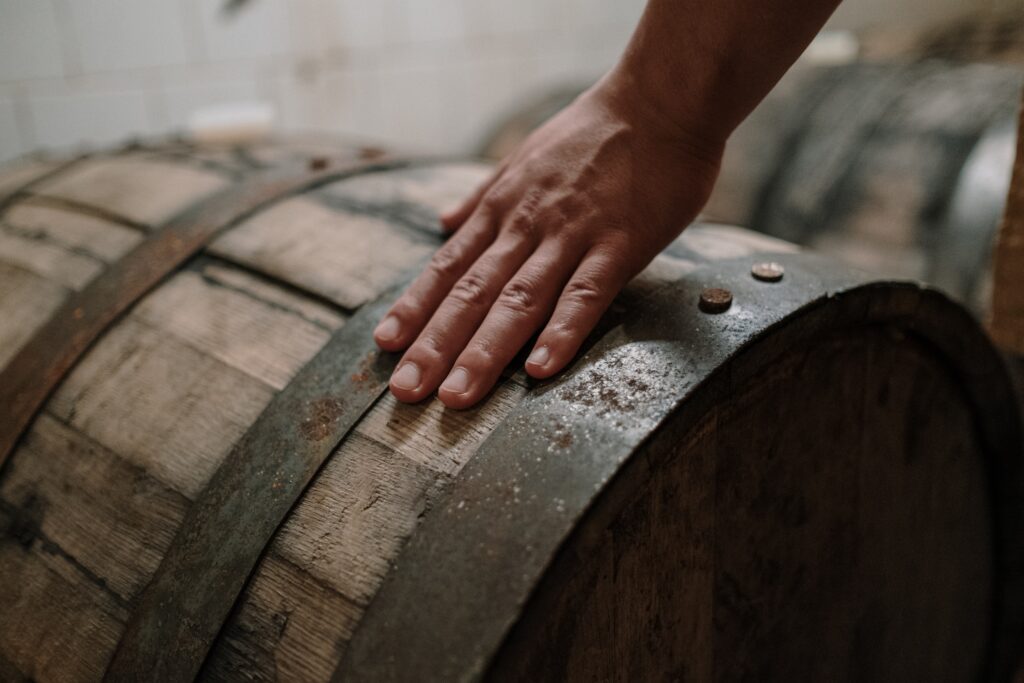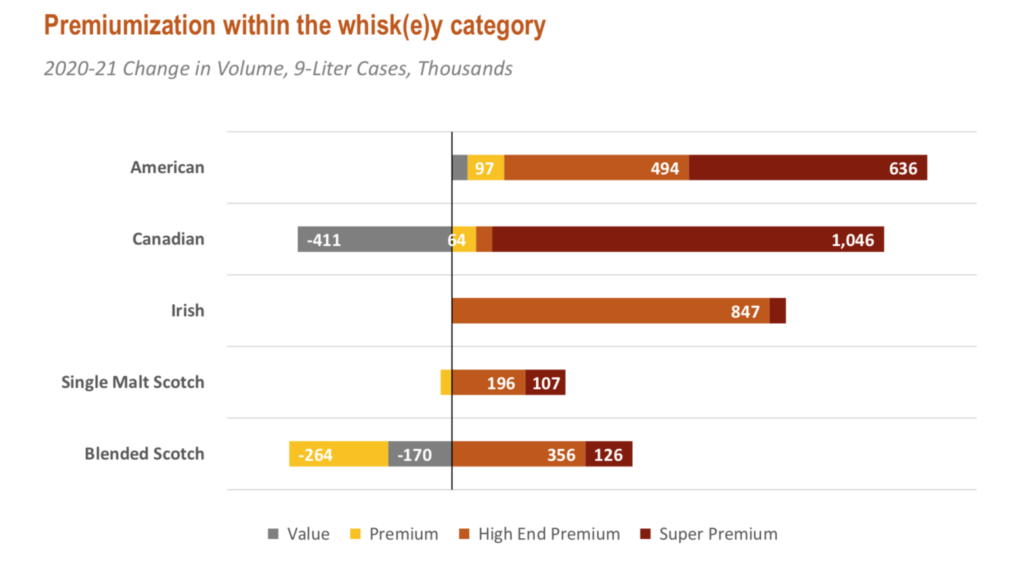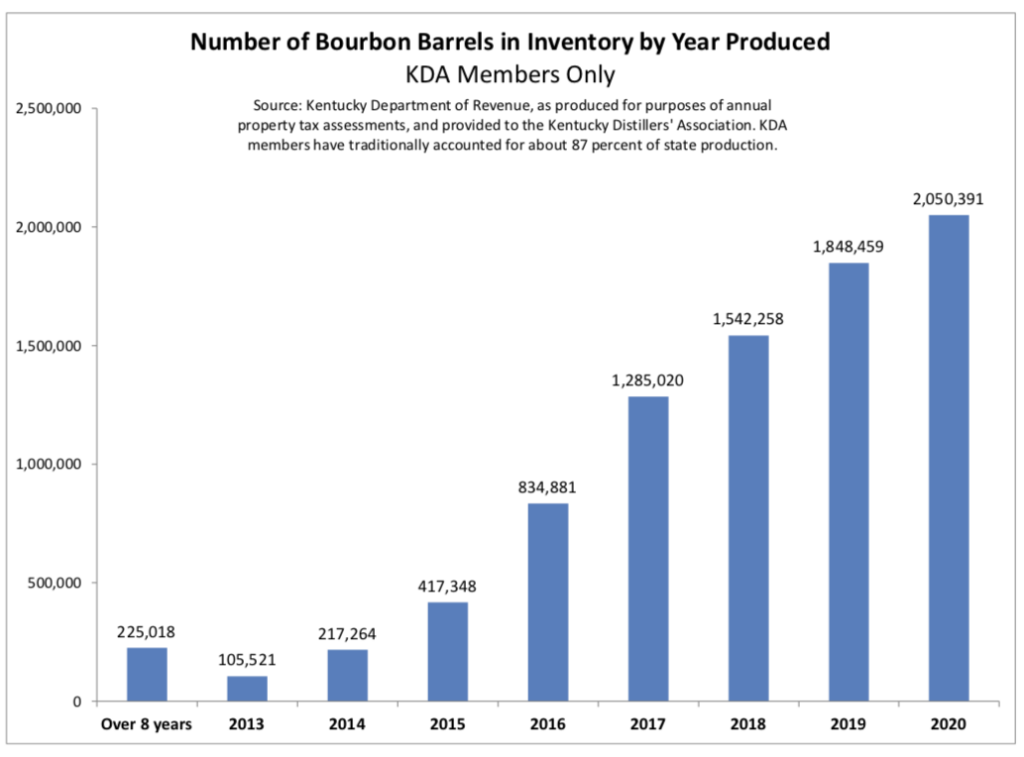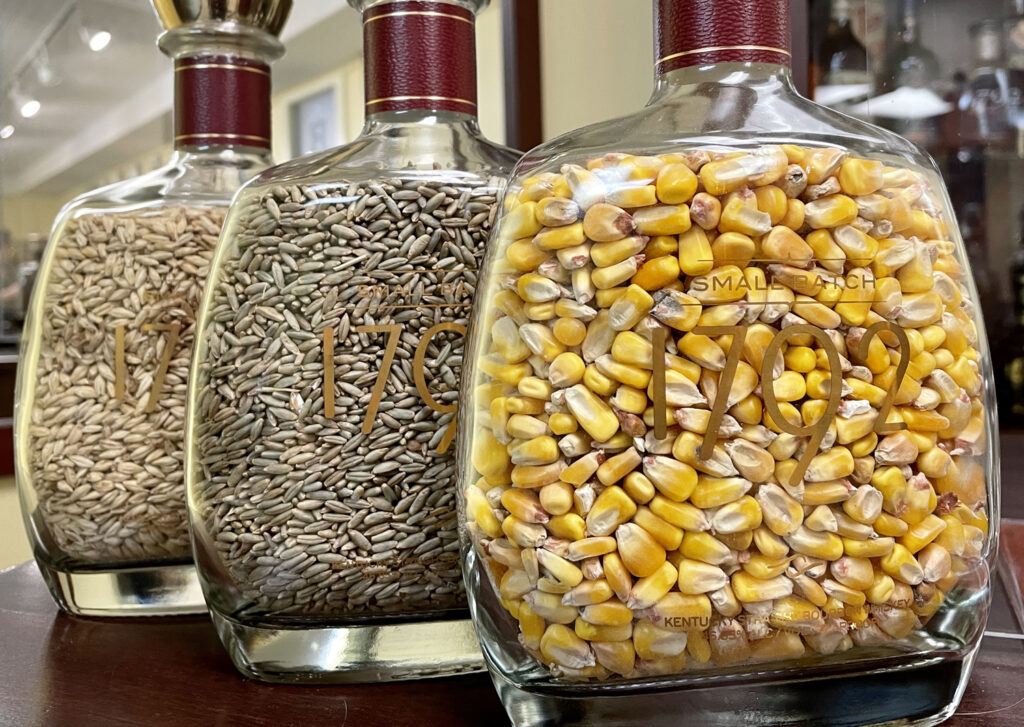
As we look forward to a prosperous 2022 in the wide, wide world of whiskey, there is some positive-trending data to mention, but we can’t fool ourselves into believing that whiskey and bourbon are immune to supply chain issues — like every other industry in the world right now.
But let’s start with the good news.
Premium Brands Boom
According to the recent State of the Union report released by the Distilled Spirits Council of the United States (DISCUS), spirits revenue increased in 2021 by $3.8 billion. Also, spirits revenue growth has accelerated in recent years. In fact, throughout the past 20 years, the spirit industry’s average annual growth was 5.5% compared to 7.3% in the past five years.

That is a huge step forward for the spirits industry indeed.
According to the study, there are three main drivers of this growth, including on-premise sales, premiumization of brands and at-home occasions. The big one here for the American whiskey category (DISCUS includes bourbon here) is definitely the shift in demand for premium brands.
Gone are the days where consumers are reaching for rotgut bourbon on the bottom shelf. Instead, they’re opting for higher priced bottles like Woodford Reserve, Angel’s Envy, Jefferson’s Bourbon, limited releases and elevated single-barrel offerings.
According to DISCUS, the total spirit revenue rose 24.2% in the super premium category and 11.5% in the high end premium category. American whiskey falls just below tequila when it comes to premium offerings.
Take a look at this chart for proof:

There are many reasons to celebrate here with these overall numbers and trends, especially when it comes to investing in whiskey. But let’s take a look more specifically at Kentucky bourbon.
Kentucky Bourbon Spotlight
The highly esteemed trade organization Kentucky Distillers’ Association (KDA) — to which CaskX is a proud member of — also released its annual report recently. The findings are quite impressive.
The bourbon industry is now fueling the Kentucky economy with $9 billion each year, generating more than 22,500 jobs with $1.23 billion in payroll. There are now 10.3 million barrels of bourbon aging in Kentucky.

And if you had any questions about the Bourbon Boom busting anytime soon, you might be satisfied to know that Kentucky is in the middle of a massive $5.2 billion capital investment spree.
This isn’t slowing down anytime soon, folks.
“Distilleries, jobs, wages, revenue and investment are up triple digits across the board in the last 12 years,” said Kentucky Gov. Andy Beshear in a news release. “In turn, this amber wave has spurred more corn production, barrel cooperages and other supply-side manufacturers that are sustaining families and adding vibrancy to local communities.”
The biennial report was conducted by noted economist Dr. Paul Coomes and commissioned by the nonprofit KDA. Below is a bulleted list of the highlights, courtesy of the KDA:
- $9 billion in economic output every year
- More than 22,500 jobs, up 83% in last 20 years
- $1.23 billion in payroll, up 250% in last 20 years
- Average salary of $101,567 – the first time that amount has exceeded $100,000
- KDA distillers bought 17 million bushels of corn in 2020, with 75% coming from Kentucky farmers
- Corn production has tripled in many Kentucky counties where distillers are located
- All-time record of 10.3 million aging barrels of Bourbon, the first time over 10 million
- Bourbon production – number of barrels filled each year – is up 435% since 1999
- Kentucky distillers filled a record 2.4 million barrels in 2020
- $5.2 billion in capital projects completed or planned by 2025, including more than $100 million to build or expand Kentucky Bourbon Trail® experiences
- Investments between 2021-2025 will create 4,565 new jobs, $258 million in payroll and $29 million in tax revenue
- Distilling has the highest job spin-off factor among top 20 Kentucky manufacturers by employees; for every distilling job, three more are created
- Value of distillers’ real and tangible property has quadrupled in last 12 years to $1.49 billion
- Kentucky continues to tax distilling higher than all other large industries in the commonwealth.
- Distilling production and consumption generates $286 million in local and state tax revenue annually. That’s $179 million more tax revenue a year versus 12 years ago.
- Kentucky has the fifth-highest bourbon and spirits tax rate in the country, and the state’s distillers by far pay more in federal alcohol tax – $1.8 billion – than any other state
- The KDA’s Kentucky Bourbon Trail® and Kentucky Bourbon Trail Craft Tour® experiences continue their rapid rebound from COVID and closures, up 160% in total attendance from last year and just down slightly from pre-pandemic record in 2019.
These findings help solidify bourbon’s hot potential in an investment market, but there are some looming supply chain issues that could slow down production and/or increase prices. For the full picture here, let’s examine those in detail.
Supply Chain Pains
According to the DISCUS report, there are several economic issues the spirits industry as a whole is either experiencing now or will be soon. Those are listed here directly from the report (courtesy of DISCUS):
- Inflation: Costs are rising across the board. — A combination of factors including (but not limited to) strong demand, workforce shortages, and supply chain disruptions have driven up prices, especially for energy, transportation, and food. Inflation has reached the highest level since 1982.
- Workforce shortages continue. — Most manufactures say worker shortages combined with the tight labor market are negatively impacting production and deliveries.
- Supply chain challenges are severe but expected to improve. — Historically high supply chain pressures are expected to abate this year.
- The economy finished strong in 2021 but growth is expected to slow. — Q4 2021 GDP exceeded expectations. Within personal consumption expenditures, consumer spending on food service and accommodations was a key contributor to GDP growth. However, U.S economic growth is expected to slow in 2022.
- Real disposable income still higher than pre-pandemic levels. — After significant gains in 2020, real disposable declined in 2021, but current levels are still higher than 2019.
- Tariffs: Progress made in 2021 but work remains. — UK still applies a 25% tariff on American whiskeys, and the goal for 2022 is to return to duty-free trade with all US-UK-EU spirits.

As you can see, there are quite a few challenges that lay ahead this year, but let’s look a little closer at the supply chain issues. Along with material shortages like grains, barrels, glass and labels, there’s also a rising cost of transportation affecting most distilleries.
One major concern for all American whiskey makers is a possible shortage of white oak for making barrels. We know bourbon must be aged in virgin oak barrels, but is there enough supply for the demand? A recent article in The Daily Beast takes a deep dive on this very topic.
Writer Lew Bryson talks to loggers, wood scientists and coopers to discuss the potential shortages, but it’s not all doom and gloom. According to Jason Stout — vice president for marketing and business development at Independent Stave Co., America’s largest maker of barrels — he’s not concerned.
“12 months ago, the situation was quite a bit tighter. We were coming off two really rainy years, when they just couldn’t log. Prices were high. But the rest of 2019 was great, fantastic. Our inventories are at a really good position. We’re buying logs across 20 states, and we see plenty of oak.”
Jason Stout, Independent Stave Co., The Daily Beast
There has also been a glass shortage since the pandemic began, and this article from Louisville’s The Courier Journal in 2021 details that issue specifically. Writer Dana McMahan talks to distillers and industry analysts about the issue:
“There is a worldwide glass shortage right now. Many factories shut down as a result of COVID-19 quarantining. Now that economies are opening back up, manufacturers have a backlog of orders. Unfortunately, one does not simply flip a switch and turn a modern glass factory back on. It takes time.”
David Ozgo, chief economist for the Distilled Spirits Council, The Courier Journal
As the industry navigates through these supply chain issues, rest assured that bourbon is still being produced in mass quantities each and every day in Kentucky and in every other state in the country.
These issues will likely be a minor blip on bourbon’s upward trajectory, and like most industries, with every setback comes innovative ideas to better preserve and maintain the product for years to come.
Now is the optimal time to invest in the bourbon and whiskey industry. Learn more about CaskX’s barrel portfolio today.

